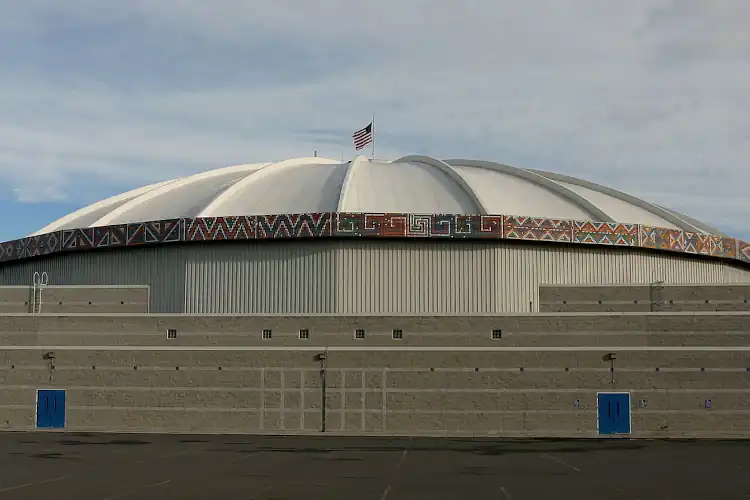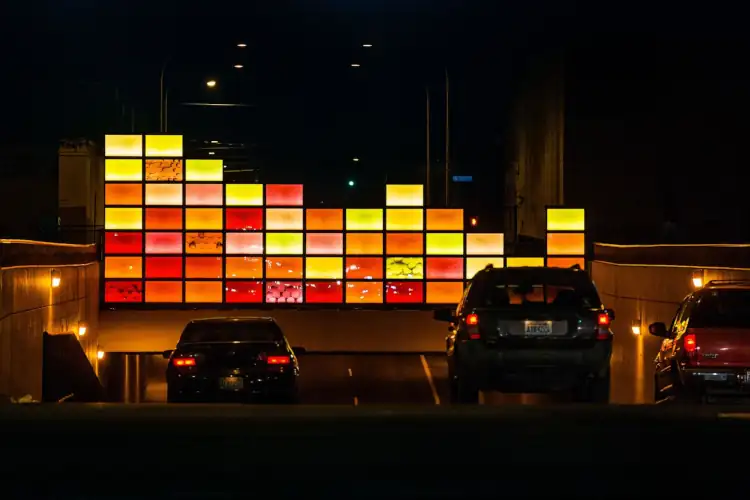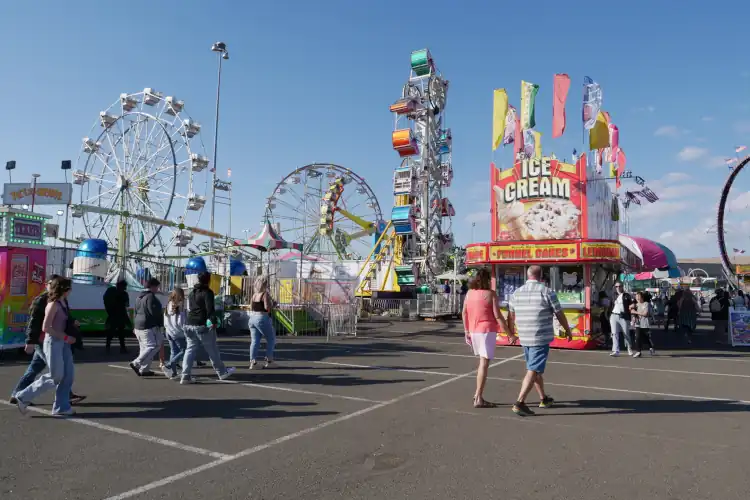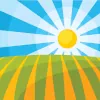Discover Yakima

Yakima Skyline
With a population of approximately 97,000, Yakima is the largest city in Central Washington and the 11th largest in the state. Yakima is about 60 miles southeast of Mount Rainier. It is situated in the Yakima Valley, a productive agricultural region noted for apple, wine, and hop production. The name Yakima originates from the Yakama Nation Native American tribe, whose reservation is located south of the city.

The SunDome
The Yakima Valley SunDome is a 6,195-seat multi-purpose arena in Yakima, Washington, United States. It was built in 1990, on the Central Washington State Fairgrounds, by contractor Gilbert H. Moen Co and architecture firm Loofburrow & Associates. The SunDome was designed to host sporting events, i.e. basketball, soccer, volleyball, ice shows, horse shows, circuses, boxing and concerts, as well as agricultural expos, trade shows, symposiums, conventions, and much more.

Bins of Light
The piece is made up of more than 50 glass panels that have images of fruit on one side and silhouette-like representations of well-known Yakima Valley fruit labels on the other side. The fruit side of the panels face east and the labels side of the panels face west. The bin-shaped panels that make up Bins of Light are illuminated by sunlight during the day and by LED lights at night. Lights in the panels turn on and off in a pattern reminiscent of the stacking and unstacking of the fruit bins.

The Palm Springs of Yakima
Originally this sign was posted to celebrate the centennial but after the centennial celebration had finished, the owner of the sign (Trailwagons) removed the centennial dates and words and painted in its place "the Palm Springs". The sign can still be seen when driving south on I-82.

State Fair Animal Pens
Agriculture has always been central to the Yakima valley, and that includes livestock. At the Central Washington State Fair in Yakima, there are plenty of stalls for owners to proudly display all sorts of animals, from sheep and goats to cows and horses.

Rides at the State Fair
There is plenty of entertainment and fun to be had at the Central Washington State Fair at State Fair Park next to the SunDome in Yakima, Washington. With rides, treats, food, and countless booths for games and vendors, there is never a dull moment.

The Farmers Market
The Downtown Yakima Farmers Market (DYFM) is a great option for an outdoor grocery store. There are many fun events and exciting elements to the market. That, in addition to the featured fresh produce and value-added products make up the heart of the DYFM.
Population
Yakima is the largest city in Yakima County with a population of about 96,000. That makes it the 11th largest city in Washington State. Most of the people who founded Yakima were of European descent, although significant numbers of African-Americans and Asian-Americans homesteaded here as well. Relatively recently, the Yakima Valley has experienced a large influx of Latino immigrants, many from the state of Michoacan in central Mexico. Today, the Yakima community enjoys a rich mixture of people from many cultural and ethnic backgrounds.
2010 Census
As of the census of 2010, there were 91,067 people with 33,074 households, and 21,411 families residing in the city. The population density was 3,350.5 people per square mile. There were 34,829 housing units at an average density of 1,281.4 per square mile. The racial makeup of the city was 67.1% Caucasian, 1.7% African American, 2.0% Native American, 1.5% Asian, 0.1% Pacific Islander, 23.3% from other races, and 4.4% from two or more races. 41.3% were Hispanic or Latino, of any race. 19.1% of the population had a bachelor's degree or higher. There were 33,074 households, of which 33.2% had children under the age of 18 living with them, 44.7% were married couples living together, 15.7% had a female householder with no husband present, 6.3% had a male householder with no wife present, and 35.3% were non-families. 28.7% of all households were made up of individuals, and 11.9% had someone living alone who was 65 years of age or older. The average household size was 2.68 and the average family size was 3.3. 28.3% of the population was under the age of 18 and 13.1% were 65 years or older. The median age was 33.9 years. 50.7% of the population was female. The median household income was $39,706. The per capita income was $20,771. 21.3% of the population were below the poverty line.
